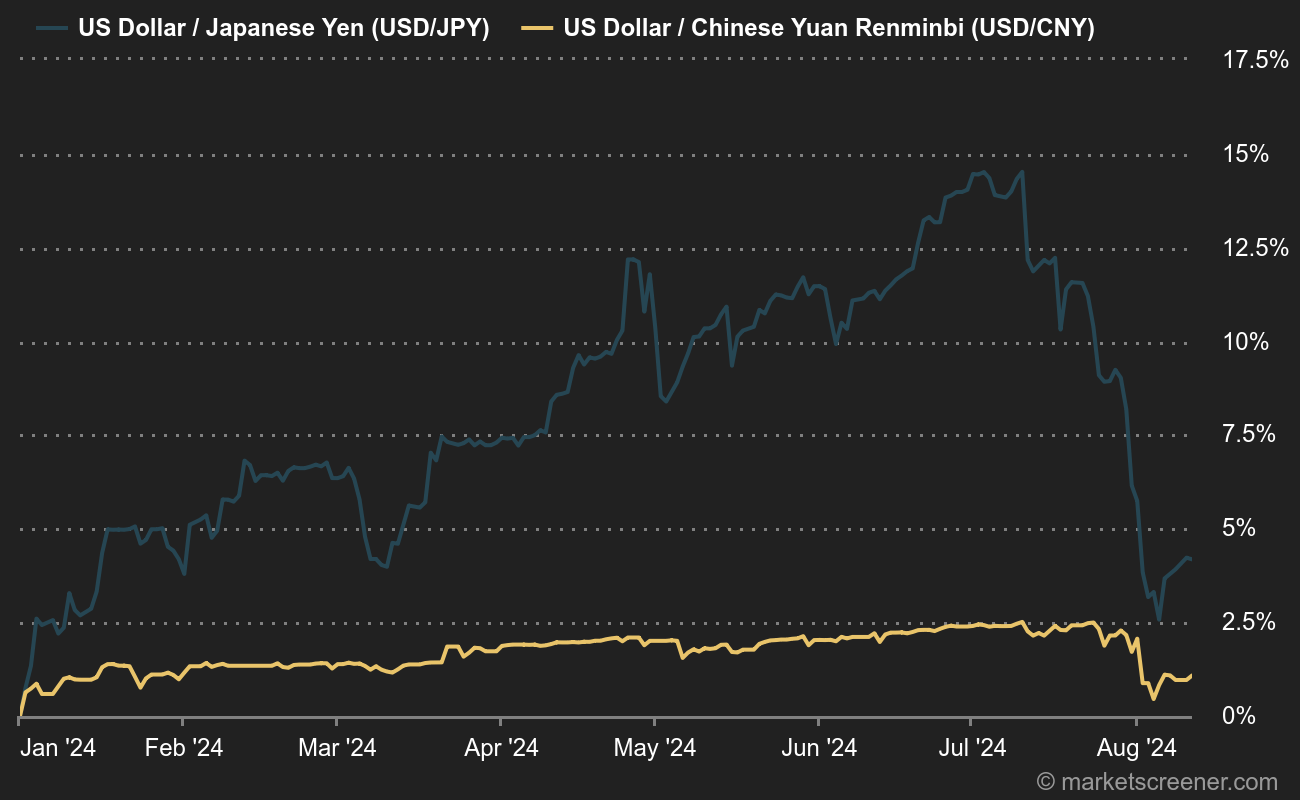Since investors painfully relearned that accelerated unwinding of yen carry trades can cause market turmoil, they’ve been keeping a close eye on other such operations, particularly those involving the Chinese yuan.
The Chinese currency has gained 2% against the dollar since the beginning of the month, a sign of increased nervousness. But professionals seem to think that the situation is not risky until Chinese domestic demand takes off again.
What is the yuan carry trade?
In the classic carry trade, investors borrow low-yielding currencies such as the Japanese yen (JPY) and Swiss franc (CHF) to invest in higher-yielding assets, mainly currencies, but also to finance leveraged equity transactions.
Carry trades in yuan are similar, but with limitations, as the currency is not fully convertible. A large proportion of yuan carry trades are carried out by Chinese exporters amassing dollar liquidity. In another version, foreigners borrow yuan to invest in mainland markets. A third type of carry trade involves using cheap offshore yuan to buy bonds denominated in dollars and other currencies.
What are its recent trends?
Until 2022, when the Federal Reserve began aggressively raising rates and Beijing opted for an easing policy to support a struggling economy, Chinese interest rates were for years higher than those in the US.
As dollar yields soared, Chinese exporters discovered that they could earn up to 5% a year if they kept their earnings in dollars, while term deposits in yuan offered a derisory return. The massive hoarding of dollars by exporters has been one of the main factors behind the yuan’s depreciation since April 2022.

The yuan’s depreciation enabled foreigners to trade dollar-yuan swaps in mainland China, and to benefit from a substantial margin on these transactions. Foreign investors could borrow cheap offshore yuan and convert it into US dollars or other currencies to invest in stocks and bonds. Investors would benefit from conversion rates as the yuan depreciated, as well as the usual return on assets.
How much money is involved?
It is difficult to estimate the total size of the yuan carry trade, but it is smaller than the global transactions financed by the yen, given that the yen is a more liquid and open global currency. Macquarie estimates that Chinese exporters and multinationals have accumulated foreign currency holdings of over $500 billion since 2022. Foreign companies have also been sending more of their profits abroad instead of reinvesting them at home.
Meanwhile, foreign holdings of yuan-denominated onshore bonds have risen by 920 billion yuan ($128.12 billion) since the end of 2022, reaching a record high in June, according to official data. This is evidence of what traders call the reverse yuan carry trade, in which foreign investors profit from lending US dollars and borrowing yuan through currency-hedged swaps, then buying yuan bonds.
Is the yuan carry trade under threat?
The unravelling of the yen carry trade, which helped send the Nikkei 225 plummeting by 12.4% in a single session eight days ago, has also pushed up the yuan and raised questions about the viability of carry trades in the Japanese currency.
According to UBS, short positions in offshore yuan have declined due to the currency’s correlation with the yen. Onshore carry trades could unwind if Chinese yields rise and dollar-yuan interest rates converge. For this to happen, Chinese domestic demand would have to recover. At present, yields are falling as investors rush to the Chinese bond market.

